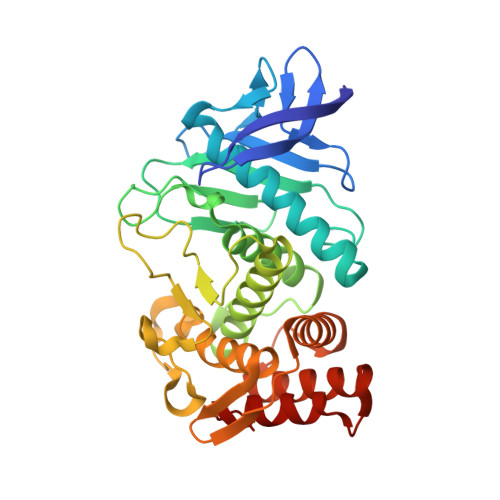Recent Progress in Robot-Based Systems for Crystallography and Their Contribution to Drug Discovery.
Ferrer, J.L., Larive, N.A., Bowler, M.W., Nurizzo, D.(2013) Expert Opin Drug Discov 8: 835
- PubMed: 23656378
- DOI: https://doi.org/10.1517/17460441.2013.793666
- Primary Citation of Related Structures:
3ZI6, 3ZI7 - PubMed Abstract:
X-ray crystallography is the main tool for macromolecular structure solution at atomic resolution. It provides key information for the understanding of protein function, opening opportunities for the modulation of enzymatic mechanisms, and protein-ligand interactions. As a consequence, macromolecular crystallography plays an essential role in drug design, as well as in the a posteriori validation of drug mechanisms. The demand for method developments and also tools for macromolecular crystallography has significantly increased over the past 10 years. As a consequence, access to the facilities required for these investigations, such as synchrotron beamlines, became more difficult and significant efforts were dedicated to the automation of the experimental setup in laboratories. In this article, the authors describe how this was accomplished and how robot-based systems contribute to the enhancement of the macromolecular structure solution pipeline. The evolution in robot technology, together with progress in X-ray beam performance and software developments, contributes to a new era in macromolecular X-ray crystallography. Highly integrated experimental environments open new possibilities for crystallography experiments. It is likely that it will also change the way this technique will be used in the future, opening the field to a larger community.
Organizational Affiliation:
Commissariat à l'Energie Atomique et aux Energies Alternatives (CEA), Centre National de la Recherche Scientifique (CNRS), Université Joseph Fourier (UJF), Institut de Biologie Structurale Jean-Pierre Ebel (IBS), F-38027 Grenoble Cedex 1, France. jean-luc.ferrer@ibs.fr


















